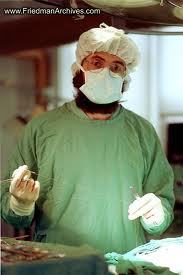This is the final installment (I think?) of my mini-series from the past. While recuperating from my hip replacement surgery, I am re-reading my previous ponderings on the miracle of healing when I had neck surgery in 1995. Here is part three. Blessings!
 When I was finally able to wake up (control people hate to be put to sleep), I was immediately conscious of two things: while I felt stiff, I didn’t feel a lot of pain including the right arm which had been throbbing and numb for weeks. I delayed my excitement because I was still drugged. Within 24 hours, I would realize that 85% of the previous right arm pain was gone.
When I was finally able to wake up (control people hate to be put to sleep), I was immediately conscious of two things: while I felt stiff, I didn’t feel a lot of pain including the right arm which had been throbbing and numb for weeks. I delayed my excitement because I was still drugged. Within 24 hours, I would realize that 85% of the previous right arm pain was gone.
The nurses attended to my every care … and some I didn’t even know I had. They woke me up every hour on the hour to shine a flashlight in my eyes. It was something about this being “brain” surgery. I had never, fortunately, thought of it that way. I found myself serendipitously energized by my post-surgery, mostly pain-free experience. It was then and there I decided … continued health and God willing, I would write about this mind-boggling, body-altering experience.
The day after surgery … I found a sledgehammer in my neck disguised as 10 metal staples. The stiffness in my neck was inconceivable and gave record to the journey of the past 24 hours.
The official stapler arrived with an air of quiet confidence. He asked how I was doing and I related the odd excitement of my mostly sleepless night. He smiled and said the surgery had gone extremely well, but cautioned me about returning “residual” right arm pain and I hated that he was right.
He also mentioned two souvenirs from our journey into the world of “necks and nerves.” One he thought would be temporary, the other more permanent. The first referenced a conversation in his office when he mentioned some “post-surgery neck pain.” He warned of my Frankenstein-like neck mobility while the staples were present. It gave a new and improved understanding of the phrase “a pain in the neck!”
The second and more long-term souvenir from the surgery, the doctor identified as a numb place along the inside of my thumb and index finger. Running his finger along this area of his concern, he said, “A loss of feeling here is sometimes a result of this kind of surgery.” I felt slightly challenged by the comment and tucked it away in the back of my mind.
I was then given a surprising peek behind the wizard’s curtain. My surgeon, professional and reserved, leaned back and listened as I expressed appreciation for my anesthesiologist, who I lovingly named “Dr. Poke.” After listening intently, he smiled and said, “He is a good man. I have known him for a long time. Matter of fact, I had the terrible task of telling him his 10 year old child was brain dead from a car accident a few years ago.”
Stunned by both the story and the storyteller, I re-connected the pieces of my pre-surgery puzzle with Dr. Poke and how he shattered my prejudice toward “pain numbers.” His view from behind the surgery room mask was not one etched by med school tests and laboratory experiments. No, his tender presence and soft touch was born of an agony and pain of the unforgettable kind. The awful and awkward truth about the death of his child had moved him to understand—healers heal best when they are wounded healers!
Pain can be the great paralyzer or the great paraphraser. It can steal us of all our words and leave us for dead or it can translate our stone cold silence into words that bring life. And the best part of this is we have a small, but significant part in what our pain accomplishes in our life. Thanks be to God!